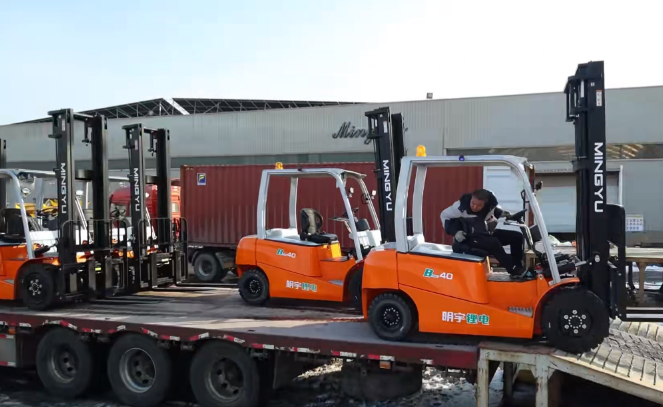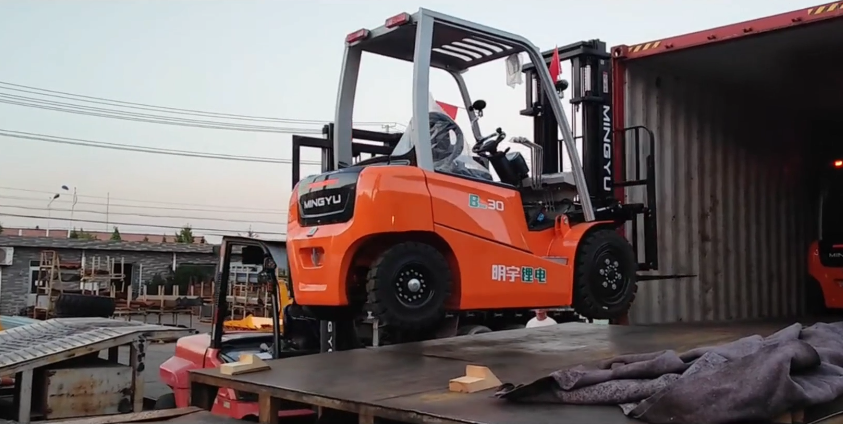Electric forklifts have revolutionized the material handling industry, offering numerous advantages over their gas-powered counterparts. However, like any machinery, electric forklifts can experience breakdowns, leaving businesses facing the inconvenience and potential safety risks of a dead forklift.

Understanding the Problem
When an electric forklift loses power, it can significantly disrupt operations and productivity. Common causes of forklift breakdowns include depleted batteries, hydraulic system failures, electrical issues, and mechanical problems. Understanding the root cause of the breakdown is crucial in determining the most appropriate course of action.
Safety Considerations
Safety is paramount when dealing with a dead forklift. It is essential to assess the situation carefully and take necessary precautions to avoid accidents. By following established safety protocols and using appropriate equipment, businesses can mitigate risks and ensure the well-being of their employees.
Moving a Dead Forklift
Mechanical Towing
- Using Another Forklift: Ensure the towing forklift has sufficient power and weight capacity to handle the dead forklift. Secure the load with heavy-duty chains or straps and maneuver carefully.
- Employing a Tow Tractor: Select a tow tractor with appropriate towing capacity and maneuverability. Attach the dead forklift using tow bars or chains and navigate obstacles carefully.
Power Boosting
- Understand the Risks: Power boosting should only be attempted by experienced technicians and with proper safety precautions. Connect the external power source to the forklift's battery terminals, ensuring correct polarity. Monitor the charging process and avoid overcharging the battery.
Battery Replacement
- Prepare for the Swap: Disconnect the battery terminals and use appropriate lifting equipment to remove the dead battery. Align the new battery correctly and securely connect the terminals. Charge the new battery if necessary.
Preventing Future Breakdowns

Regular Maintenance
- Create a Maintenance Schedule: Develop a routine maintenance plan that includes daily, weekly, and monthly inspections.
- Daily Checks: Inspect battery levels, tire pressure, and fluid levels.
- Weekly Inspections: Check the hydraulic system, electrical components, and control levers.
- Monthly Maintenance: Clean and test the battery, lubricate moving parts, and inspect the overall condition of the forklift.
Operator Training
- Proper Training: Ensure operators are well-trained in safe operating procedures, emergency procedures, and battery handling.
- Safe Driving Habits: Encourage operators to avoid sudden stops, excessive loads, and rough handling.
- Regular Training Refresher: Conduct periodic training sessions to reinforce safety practices and update operators on new procedures.
Battery Care
- Optimal Charging: Use the correct charger and avoid overcharging or deep discharging the battery.
- Storage and Handling: Store batteries in a cool, dry place and handle them with care to prevent damage.
- Regular Battery Maintenance: Clean the battery terminals, check electrolyte levels, and equalize the cells as needed.
Environmental Factors
- Temperature Control: Protect the forklift from extreme temperatures, as heat and cold can affect battery performance and component lifespan.
- Clean Operating Environment: Keep the forklift clean and dry to prevent corrosion and electrical issues.
- Ventilation: Ensure proper ventilation in the storage area to prevent battery gas buildup.
By following these guidelines and implementing a proactive maintenance approach, you can minimize the risk of forklift breakdowns and ensure the safe and efficient operation of your electric forklift fleet.
Post time:Nov.18.2024
